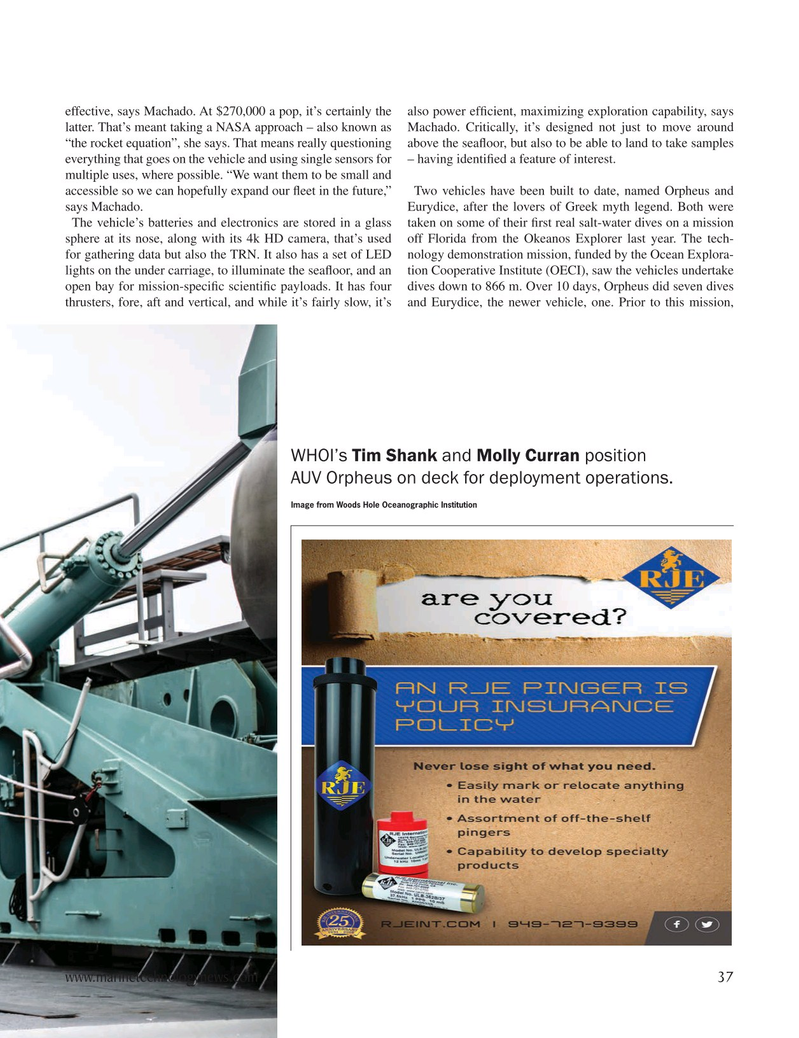
Page 37: of Marine Technology Magazine (January 2022)
Read this page in Pdf, Flash or Html5 edition of January 2022 Marine Technology Magazine
effective, says Machado. At $270,000 a pop, it’s certainly the also power ef? cient, maximizing exploration capability, says latter. That’s meant taking a NASA approach – also known as Machado. Critically, it’s designed not just to move around “the rocket equation”, she says. That means really questioning above the sea? oor, but also to be able to land to take samples everything that goes on the vehicle and using single sensors for – having identi? ed a feature of interest. multiple uses, where possible. “We want them to be small and accessible so we can hopefully expand our ? eet in the future,” Two vehicles have been built to date, named Orpheus and says Machado. Eurydice, after the lovers of Greek myth legend. Both were
The vehicle’s batteries and electronics are stored in a glass taken on some of their ? rst real salt-water dives on a mission sphere at its nose, along with its 4k HD camera, that’s used off Florida from the Okeanos Explorer last year. The tech- for gathering data but also the TRN. It also has a set of LED nology demonstration mission, funded by the Ocean Explora- lights on the under carriage, to illuminate the sea? oor, and an tion Cooperative Institute (OECI), saw the vehicles undertake open bay for mission-speci? c scienti? c payloads. It has four dives down to 866 m. Over 10 days, Orpheus did seven dives thrusters, fore, aft and vertical, and while it’s fairly slow, it’s and Eurydice, the newer vehicle, one. Prior to this mission,
WHOI’s Tim Shank and Molly Curran position
AUV Orpheus on deck for deployment operations.
Image from Woods Hole Oceanographic Institution www.marinetechnologynews.com 37
MTR #1 (34-49).indd 37 1/25/2022 9:07:10 AM

 36
36

 38
38
